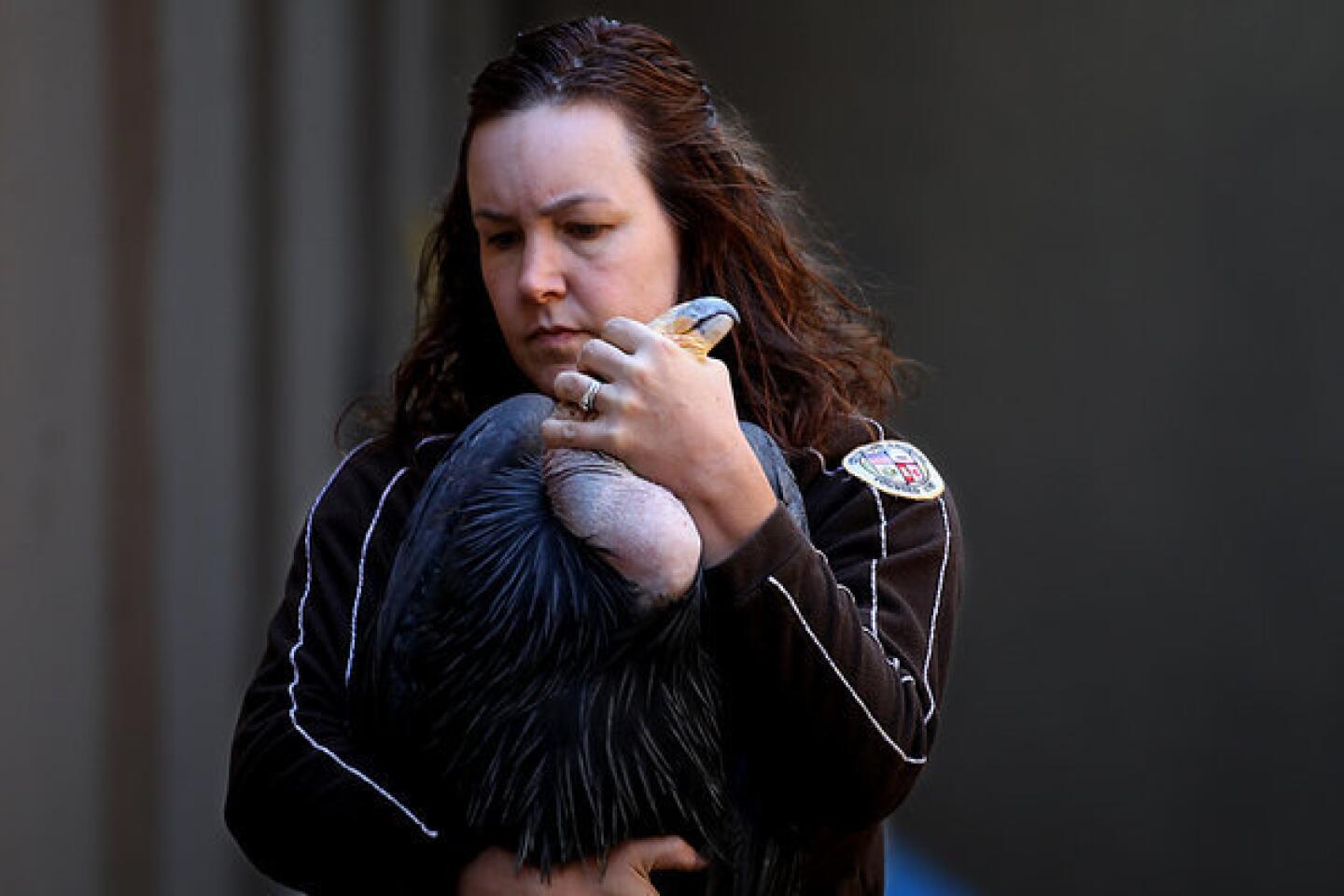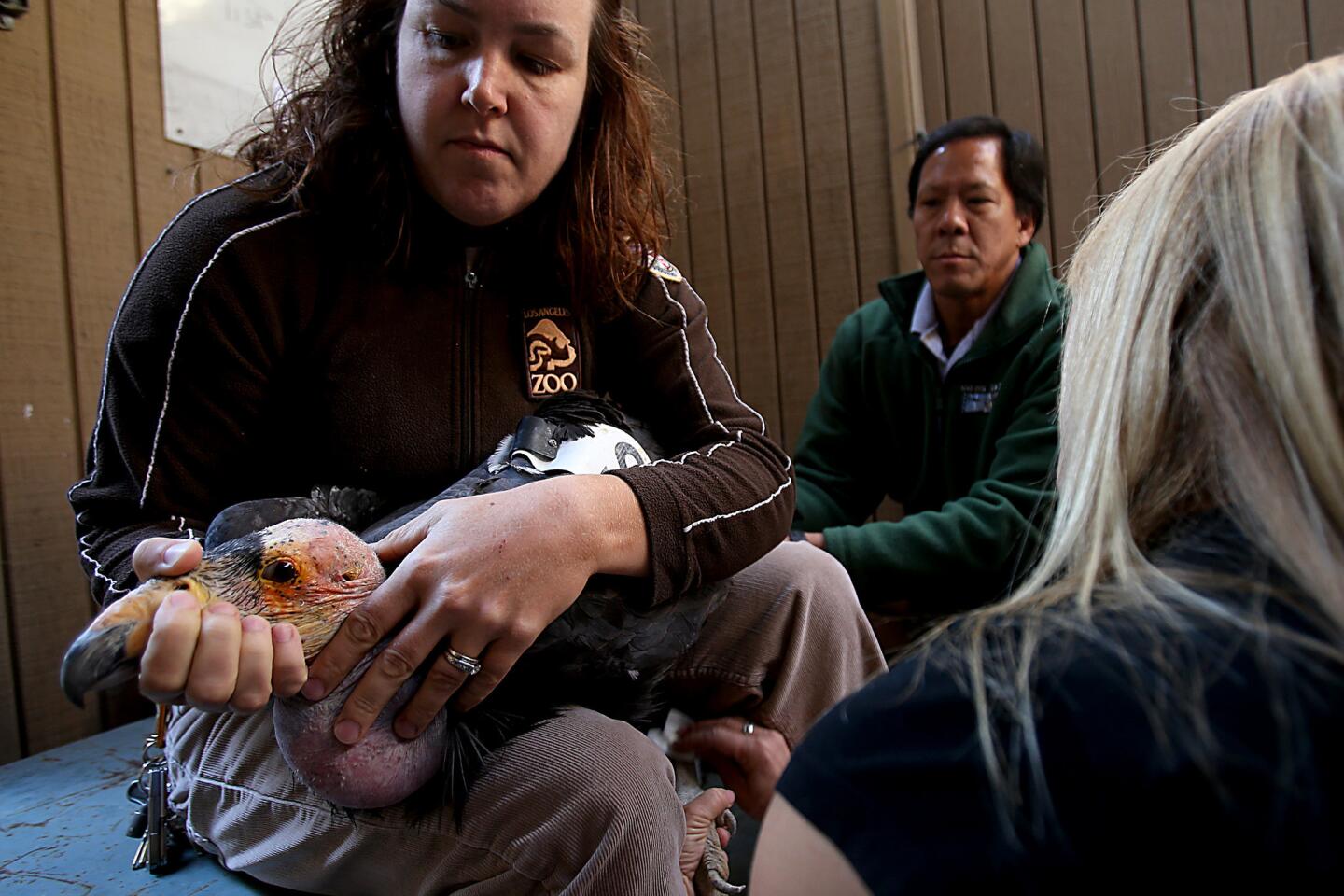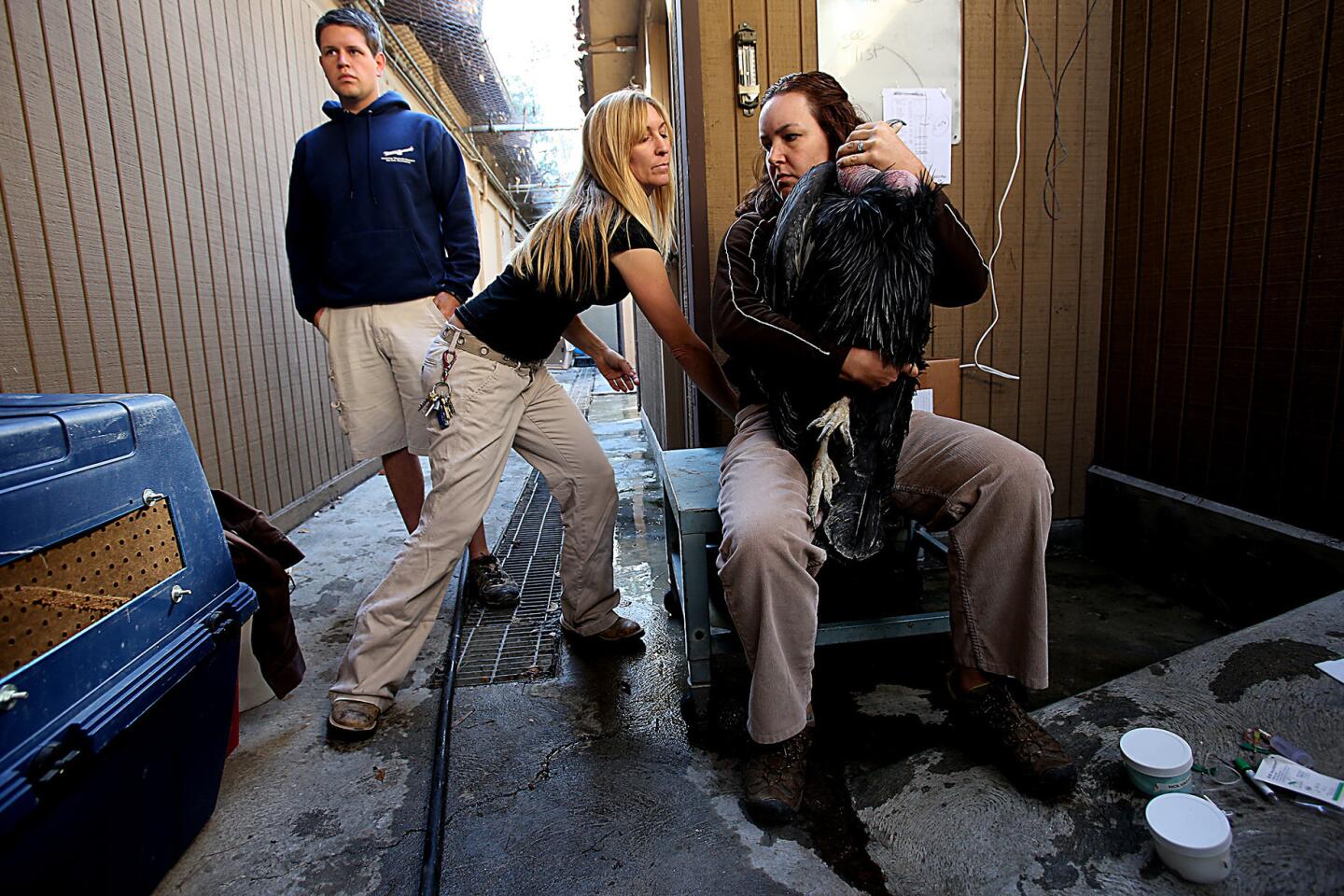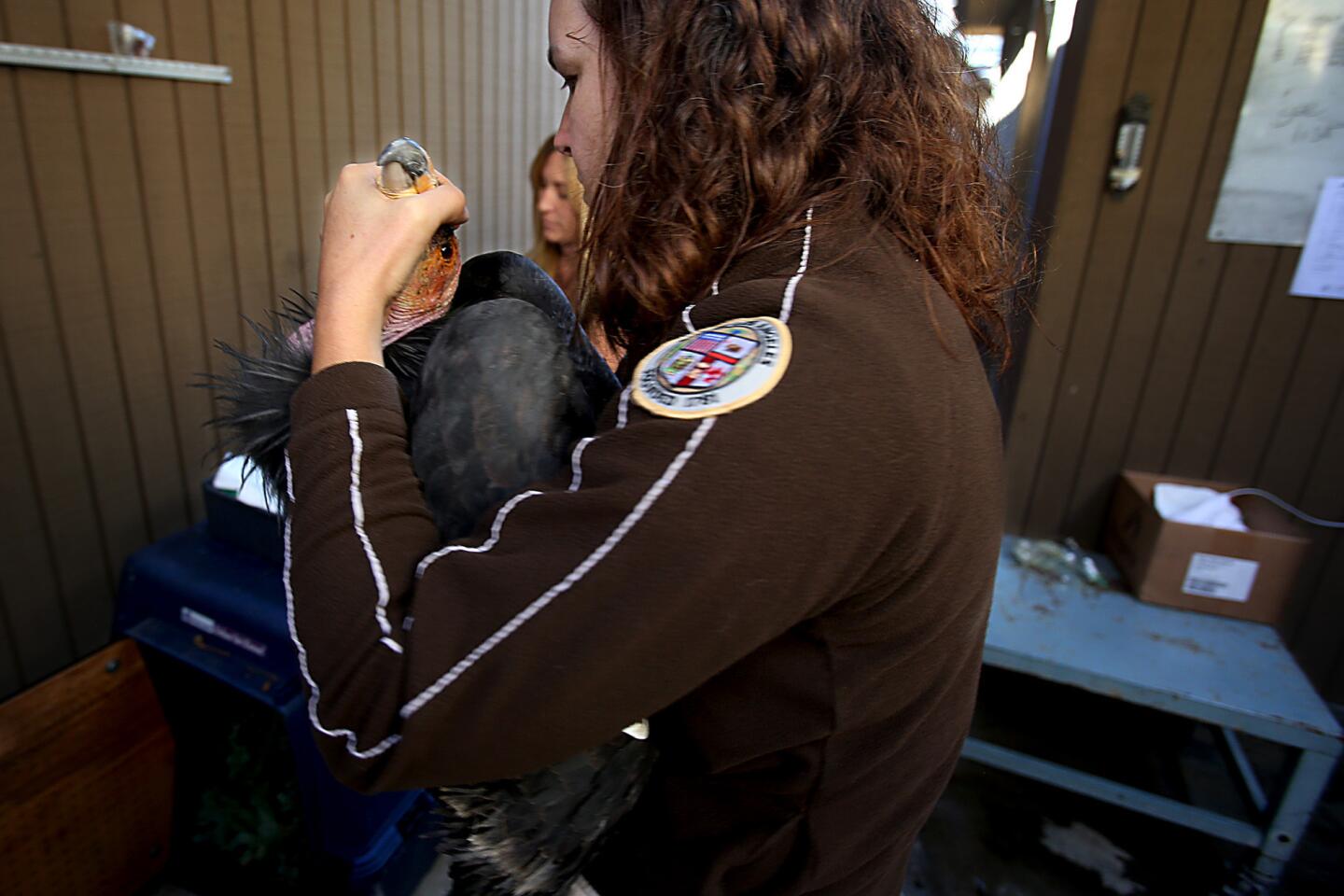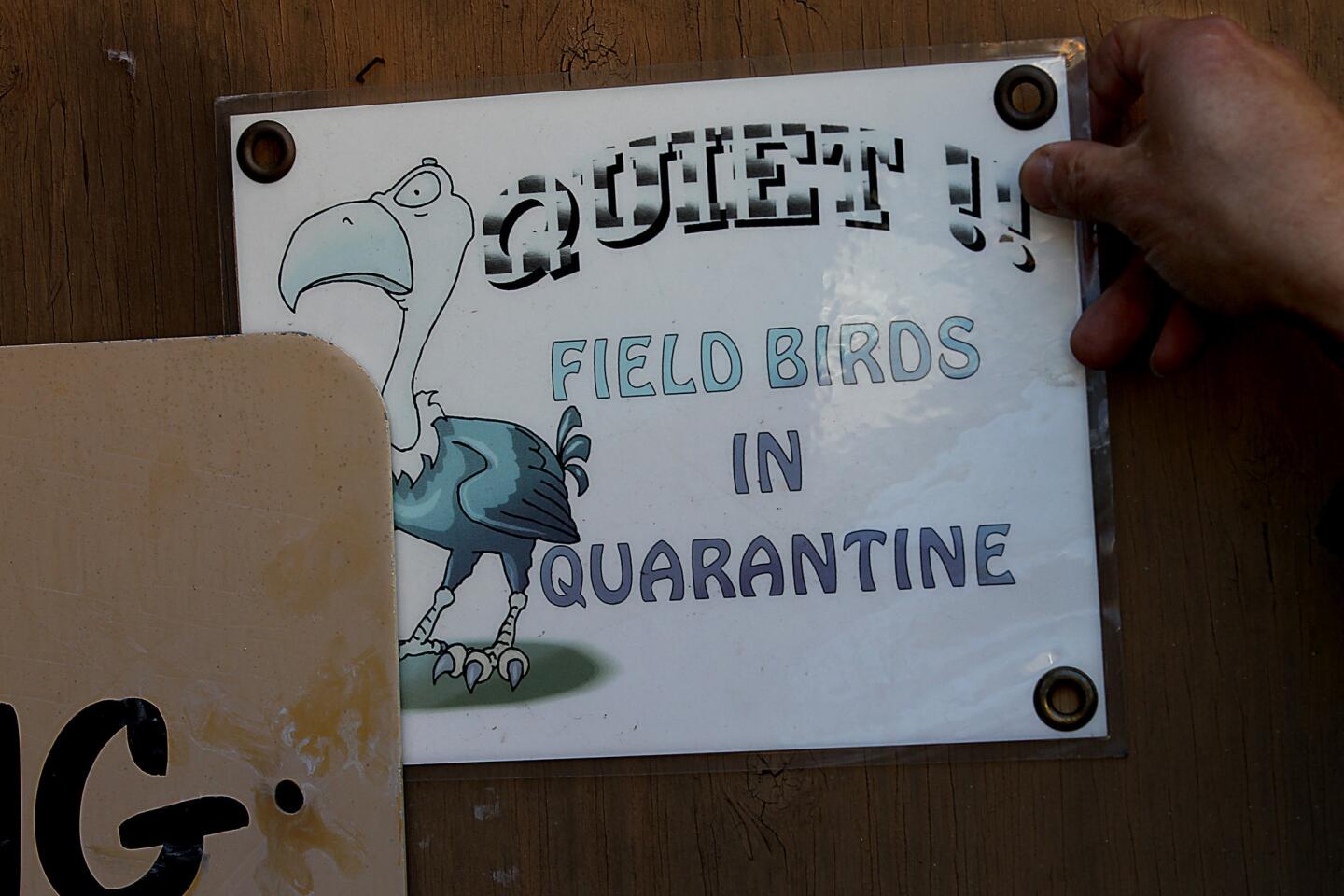Record 21 California condors treated at L.A. Zoo for lead poisoning
- Share via
A record high 21 endangered California condors were treated at the Los Angeles Zoo and Botanical Gardens for lead poisoning in October -- more than half what of the center sees in a typical year, officials reported.
The zoo’s announcement comes just weeks after Gov. Jerry Brown signed legislation requiring hunters to use non-lead ammunition in an effort to keep the toxic element from being passed on from carcasses to scavengers, such as condors.
Adam Keats, senior counsel and urban wildlands program director for the Center of Biological Diversity, attributed the high quantity of condor poisonings to hunting activity.
“There’s a wide use of lead ammunition in condor habitats. The availability of leads needs to be reduced by sale and stocking,” Keats said.
Lead toxicity is the leading cause of death in juvenile and adult condors, according to Curtis Eng, chief veterinarian at the L.A. Zoo and manager of the California Condor Program. He confirmed that one bird had died of lead toxicity earlier this year.
“That’s scary to see so many clinically sick birds,” he said in a statement.
The Gottlieb Animal Health and Conservation Center at the zoo found that although most of the condors brought in appeared healthy, they had staggering levels of lead in their systems. Low body weight, lack of appetite and signs of crop stasis -- when the stomach stops moving food -- were listed among the most common symptoms.
The bald-headed birds have wingspans of nearly 10 feet, making them the largest in North America. And because the scavengers subsist on large amounts of carrion, they’re particularly susceptible to consuming tainted meat from animals shot dead by lead ammunition.
By the 1980s, they were nearly driven to extinction, prompting an aggressive preservation plan. As a result, there are now about 231 condors in the wild, according to the Ventana Wildlife Society.
Wildlife biologists try to trap the endangered birds twice a year, from June until the end of hunting season in November or December, to test their blood for lead.
When treated at the L.A. Zoo, condors receive chelation, which pulls the lead out of the body. Those treatments are followed by supplemental fluids to minimize effects from lead toxicity and the chelation.
Most condors don’t show signs of illness after treatment, which could take as little as three weeks, according to the zoo. Sometimes, lead removal requires surgery if a bird can’t pass it through vomiting or defecation.
Keats said the statewide ban on lead ammunition -- to be phased in by 2019 -- should result in fewer condors getting poisoned in the coming years.
ALSO:
S.F. drug dealer convicted of burning homeless addict alive
Rabbi arrested in Beverly Hills on suspicion of sex abuse in New York
Musician struck, killed on 2 Freeway had just completed chemotherapy
Twitter: @AliciaDotBank
More to Read
Sign up for Essential California
The most important California stories and recommendations in your inbox every morning.
You may occasionally receive promotional content from the Los Angeles Times.
